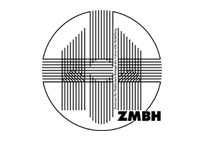Motility in Archaea is driven by a nanomachinery called the archaellum. So far, archaella have been exclusively described for the archaeal domain; however, a recent study reported the presence of archaellum gene clusters in bacterial strains of the SAR202 clade (Chloroflexota).
A research team led by SFB 1381 PI Sonja Albers and SFB 1381 SGBM student Shamphavi Sivabalasarma (both project A01) has now shown that bona fide archaellum gene clusters are widespread in several members of the Chloroflexota, which in turn lack any bacterial flagellar components. Analysis of archaellum encoding loci and predicted structures show remarkable similarity to the archaellum machinery. Moreover, using cryoEM single particle analysis, they solved the structure of the bacterial archaellum from Litorilinea aerophila, demonstrating the successful expression and assembly of this machinery in Bacteria and its function in swimming motility. Finally, a phylogenomic analysis revealed two horizontal gene transfer events from euryarchaeal members to Chloroflexota.
In summary, this study, which has been published in Nature Microbiology, demonstrates that a functional and assembled archaellum machinery can be successfully exchanged between the two prokaryotic domains.
Illustration: CryoEM structure of the L. aerophila archaellum (2.7 Å resolution, scale bars, 100 Å). Adapted from Figure 5 (Sivabalasarma, et al. Nat Microbiol, 2025).









